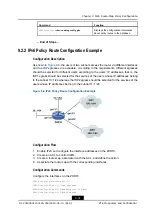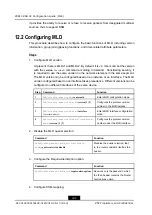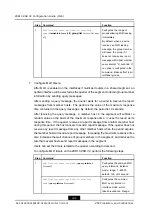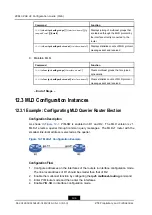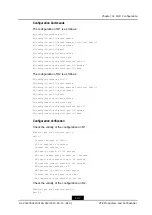
Chapter 10
IPv6 Multicast
Table of Contents
10.1 Multicast Overview
Multicast Introduction
As a replacement of IPv4, IPv6 uses a 128–bit address structure to solve the problem of IP
address shortage. At the same time, IPv6 optimizes some characteristics. IPv4 multicast
solves the problem of single-point sending and multi-point receiving, and it implements
high-efficiency point-to-multipoint data transmission. It saves a lot of network bandwidth
and reduces network load. Therefore, multicast is applied and enhanced in IPv6.
The most obvious difference between IPv6 multicast and IPv4 multicast is that the IPv6
multicast address mechanism is improved. The group member management, multicast
packet forwarding and multicast path establishment of IPv6 are similar to those of IPv4.
Multicast Address Introduction
An IPv6 address is of 128–bit long, divided by colons into eight bytes with four hex numbers
in each byte, such as FEDC:BA98:7654:3210:FEDC:BA98:7654:3210. An IPv6 multicast
address identifies a group of interfaces that belong to different nodes. A node can belong
to 0 or several multicast groups. A packet sent to a multicast address is received by all
interfaces identified by the multicast address.
According to RFC, some IPv6 multicast addresses have been allocated permanently, as
listed in
.
Table 10-1 IPv6 Multicast Address Allocation
Name
Address
Description
Reserved multicast address
FF0x::
Not allocated to any multicast
address
All node multicast addresses
FF01::1 (node-local)
FF02::1 (link-local)
All router multicast addresses
FF01::2 (node-local)
FF02::2 (link-local)
FF05::2 (site-local)
10-1
SJ-20140504150128-018|2014-05-10 (R1.0)
ZTE Proprietary and Confidential









